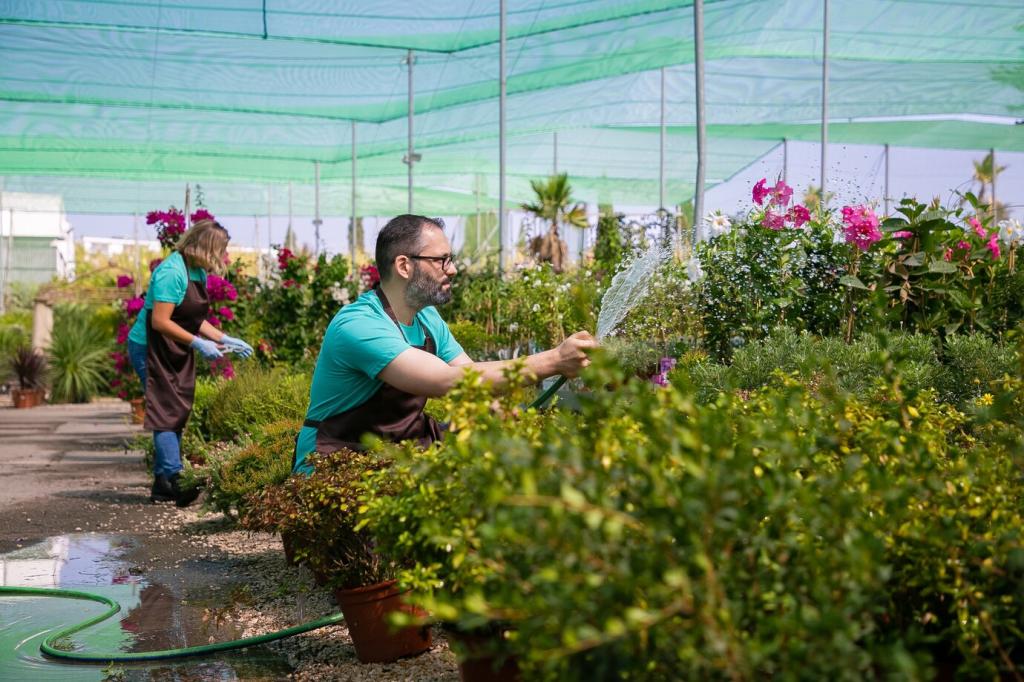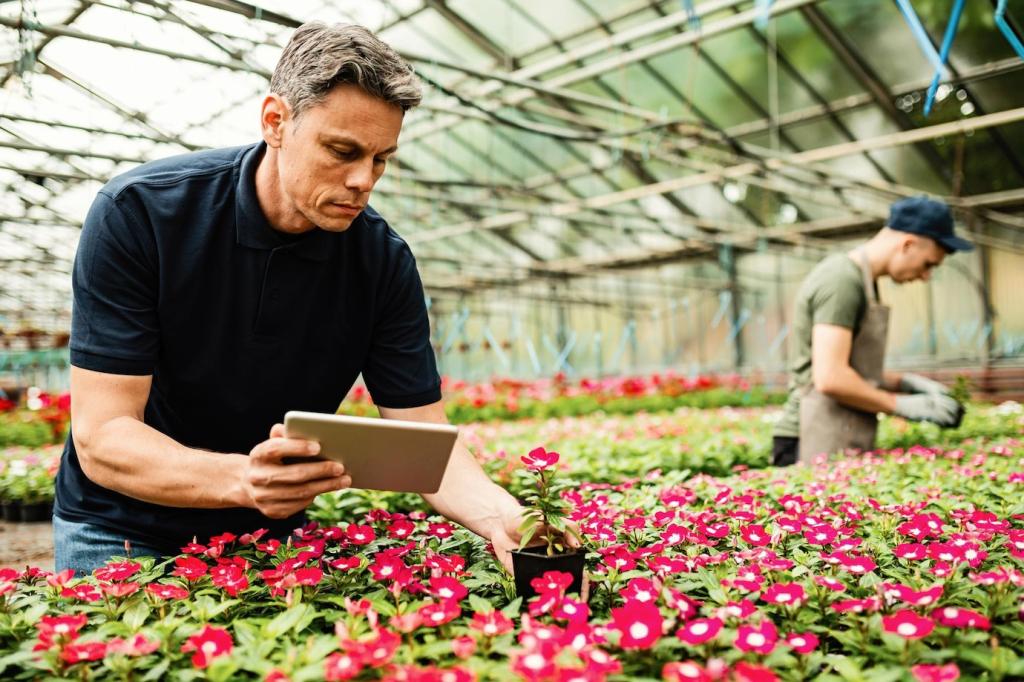
Vertical Farming Techniques
Vertical farming techniques are transforming the way we think about agriculture by enabling efficient crop cultivation in vertically stacked layers or integrated environments within urban settings. These innovative methods maximize space, reduce resource consumption, and increase crop yields while minimizing environmental impact. Through the application of advanced technologies and controlled environments, vertical farming offers sustainable solutions to feeding growing populations around the world.
Climate Control Systems
Climate control systems are essential for creating optimal conditions within vertical farms. These sophisticated systems use sensors to monitor key variables such as temperature, humidity, and airflow within the growing area. By automating the regulation of these parameters, climate control systems ensure that crops experience minimal stress and develop uniformly. Such tight management not only promotes vigorous growth but also helps prevent pests and diseases that thrive in unstable conditions, thus safeguarding the harvest without excessive use of chemicals.
Air Quality Management
Air quality inside vertical farms is carefully managed to support healthy plant development. Carbon dioxide concentration, for example, can be increased above ambient levels to stimulate photosynthesis and boost productivity. Through integrated ventilation and filtration, the air remains free from pollutants and pathogens, reducing disease incidence and improving crop quality. This meticulous attention to air composition also contributes to efficient nutrient uptake and robust plant vitality, culminating in enhanced final products.
Light Intensity and Spectrum Regulation
Using artificial lighting, growers can precisely control both the intensity and spectrum of light that plants receive. This allows for the fine-tuning of growth stages such as germination, flowering, and fruiting. LED technology, in particular, enables customized light recipes tailored to specific crop needs, ensuring maximum photosynthetic efficiency. By regulating these environmental variables, vertical farms achieve consistent, reliable production cycles with limited seasonal or geographical constraints.
Hydroponic Systems
The Nutrient Film Technique (NFT) is a widely adopted hydroponic system where a thin stream of nutrient solution continuously flows over the roots of plants housed in channels or troughs. This perpetual movement supplies oxygen and dissolved nutrients directly to the roots while minimizing stagnant water, thereby reducing disease risk. NFT systems are valued for their simplicity and efficiency, making them suitable for fast-growing leafy greens and herbs typically found in vertical farms.

Aquaponic Integration
Symbiotic Water Circulation
The core of an aquaponic system is the recirculating loop that connects fish tanks to plant beds. Water flows from the fish tanks carrying waste products, which are then broken down by beneficial bacteria into nutrients usable by plants. Cleaned water returns to the fish tanks, supporting a healthy aquatic environment. This closed system drastically reduces water consumption compared to soil-based farming and naturally cycles nutrients, reducing the need for synthetic fertilizers.
Balancing Fish and Plant Production
Achieving balance between fish and plant production is crucial in aquaponics. Fish populations must be carefully managed to match plant nutrient uptake, and appropriate plant densities are maintained to process the waste generated by the fish. Professional monitoring and adjustment of pH, nutrient concentration, and water temperature are necessary for both organisms to thrive. When balance is achieved, both components yield efficiently, making aquaponics a highly productive and sustainable vertical farming method.
Microbial Community Development
Beneficial microbes play a vital role in converting fish waste into plant-available nutrients. These microorganisms colonize filter media and root zones, facilitating the nitrification process essential for plant uptake and fish health. Encouraging a robust microbial community ensures nutrient cycling remains efficient and system stability is maintained. This biological foundation underpins the ongoing productivity of aquaponic vertical farms, providing a naturally balanced environment for diverse harvests.

Custom Spectrum LEDs
Customizable LED lights can be engineered to emit specific wavelengths of light, influencing plant morphology, growth rates, and biochemical content. By adjusting the spectral composition, farmers can promote lush vegetative growth, induce flowering, or enhance nutritional content, such as increasing antioxidant levels in leafy greens. These tailored lighting solutions are fundamental in ensuring that crops attain their optimal quality and yield while minimizing energy use.

Dynamic Lighting Schedules
Dynamic lighting schedules allow growers to mimic natural day-night cycles or manipulate plant photoperiods to hasten growth or flowering. By integrating automation and smart controls, lights can be dimmed, intensified, or shifted in color according to the plant’s developmental stage or specific crop requirements. This flexibility maximizes the growth potential of every cultivated crop and makes production cycles more predictable for market demands.

Previous slide
Next slide
Previous
Next
Space Optimization Strategies
One fundamental approach to optimizing space in vertical farms is the use of multi-layer racking systems. By building vertically, growers can cultivate rows of crops stacked one above the other, dramatically increasing output per square meter. Each layer can be equipped with independent lighting, irrigation, and control systems, allowing for the tailored cultivation of different crops simultaneously. Multi-layer architectures enhance overall productivity and facilitate efficient space management in urban farming locations.
Water Conservation Approaches
Closed-Loop Irrigation Systems
Closed-loop irrigation systems recirculate water through the entire vertical farm, minimizing waste. Excess water from irrigation is collected, filtered, and reused, maintaining a constant supply of moisture and nutrients to plant roots. This circular method dramatically reduces total consumption while preventing runoff and environmental contamination. Consistently monitored closed-loop systems ensure that crops receive optimal hydration with unparalleled resource efficiency.
Condensation and Water Recovery
Environmental control systems in vertical farms often capture water vapor from transpiration and climate management processes. This condensed water is collected, purified, and reintroduced into the irrigation system, further conserving resources. In regions with high humidity or energy-efficient climate control, condensation recovery can supply a substantial portion of a farm’s total water needs. By closing the loop at multiple points, vertical farms demonstrate responsible stewardship of increasingly precious water supplies.
Precision Water Delivery
Precision water delivery technologies tailor hydration schedules and volumes directly to plant requirements. Automated drip or misting systems dispense exact quantities of water to roots, minimizing evaporation and leaching. Moisture sensors assess soil or substrate conditions in real time, optimizing irrigation cycles for different crops or growth stages. This granular management prevents overwatering, reduces disease risk, and ensures that every drop of water contributes to crop productivity.
